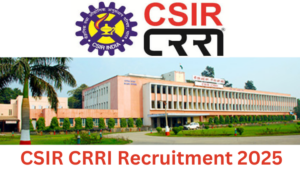Q1. Which of the following is the cellular respiratory centre?
(a) Nucleus
(b) Mitochondria
(c) Ribosome
(d) Golgi body
(e) None of the above
Q2. The water and mineral salts are transported to the various organs by which of the following?
(a) Xylem
(b) Phloem
(c) Cortex
(d) Cambium
(e) None of the above
Q3. The food material prepared in the plants is transported to the various organs by which of the following?
(a) Xylem
(b) Phloem
(c) Cortex
(d) Cambium
(e) None of the above
Q4. Which one of the following statements about gravitational force is NOT correct?
(a) It is experienced by all bodies in the universe
(b) It is a dominant force between celestial bodies
(c) It is a negligible force for atoms
(d) It is same for all pairs of bodies in our universe
(e) None of the above
Q5. Whether an object will float or sink in a liquid, depends on
(a) mass of the object only
(b) mass of the object and density of liquid only
(c) difference in the densities of the object and liquid
(d) mass and shape of the object only
(e) None of the above
Q6. A ball balanced on a vertical rod is an example of
(a) stable equilibrium
(b) unstable equilibrium
(c) neutral equilibrium
(d) perfect equilibrium
(e) None of the above
Q7. Which of the following accounts for red colour of tomato?
(a) Capsaicin
(b) Carotene
(c) Anthocyanin
(d) Lycopene
(e) None of the above
Q8. Plants normally growing on sand are known as-
(a) Lithophytes
(b) Xerophytes
(c) Chasmophytes
(d) Psammophytes
(e) None of the above
Q9. Insectivorous plants grow only on such soils which are deficient in:
(a) Calcium
(b) Nitrogen
(c) Magnesium
(d) Phosphorus
(e) None of the above
Q10. Which of the following plants produce only seeds but no fruit?
(a) Sugarcane
(b) Peanut
(c) Cycas
(d) Almond
(e) None of the above
Solutions
S1.Ans. (b)
Sol. The site of cellular respiration is mitochondrion as it involved in generation of energy, (ATP). Nucleus consists of genetic material which is transferred from one generation to another, ribosome helps in protein synthesis and Golgi apparatus helps in glycosylation.
S2.Ans. (a)
Sol. Xylem is responsible for transporting water and various mineral salts. Phloem is responsible for transportation of sucrose, cambium helps in secondary growth which gives rise to xylem and phloem and cortex is a ground tissue present in the plant organ, usually consisting of vascular bundles.
S3.Ans. (b)
Sol. The products of photosynthesis in green plants are made in leaves (mesophyll cells). Sugar molecules are synthesized, which are generally called as photosynthates. Phloem tissue carries these photosynthates to distant plant organs. Unlike conduction in xylem, the transport through phloem is multidirectional.
S4.Ans. (d)
Sol. The gravitational force is a force that attracts any objects with mass. This is called Newton’s Universal Law of Gravitation. The gravitational force on Earth is equal to the force the Earth exerts on you. At rest, on or near the surface of the Earth, the gravitational force equals your weight.
S5.Ans. (c)
Sol. Whether an object will float or sink in a liquid, depends on difference in the densities of the object and liquid.
S6.Ans. (a)
Sol. A ball balanced on a vertical rod is an example of unstable equilibrium.
S7.Ans. (d)
Sol. Tomato is red in colour due to the presence of lycopene pigment found in the chromoplasts.
S8.Ans. (d)
Sol. Psammophytes is a plant that grows in shifting sands, primarily in deserts. They are marked by a number of adaptations which enable them to exist on wind-blown sands for e.g. Haloxylon persicum, Calligonum, Ammondendron, Eremosparton, Smirnowi.
S9.Ans. (b)
Sol. Insectivorous plants are plants that derive some or most of their nutrients from trapping and consuming animals or protozoans, typically insects and other arthropods. They have adapted to grow in places where the soil is thin or poor in nutrients, especially nitrogen.
S10.Ans. (c)
Sol. The production of naked seeds or ovules without fruits is one of the main characteristic features of Gymnosperms. Cycas sp. is a gymnosperm.



 GA Capsule for SBI Clerk Mains 2025, Dow...
GA Capsule for SBI Clerk Mains 2025, Dow...
 The Hindu Review October 2022: Download ...
The Hindu Review October 2022: Download ...
 Delhi CSIR CRRI Recruitment 2025 Notific...
Delhi CSIR CRRI Recruitment 2025 Notific...







